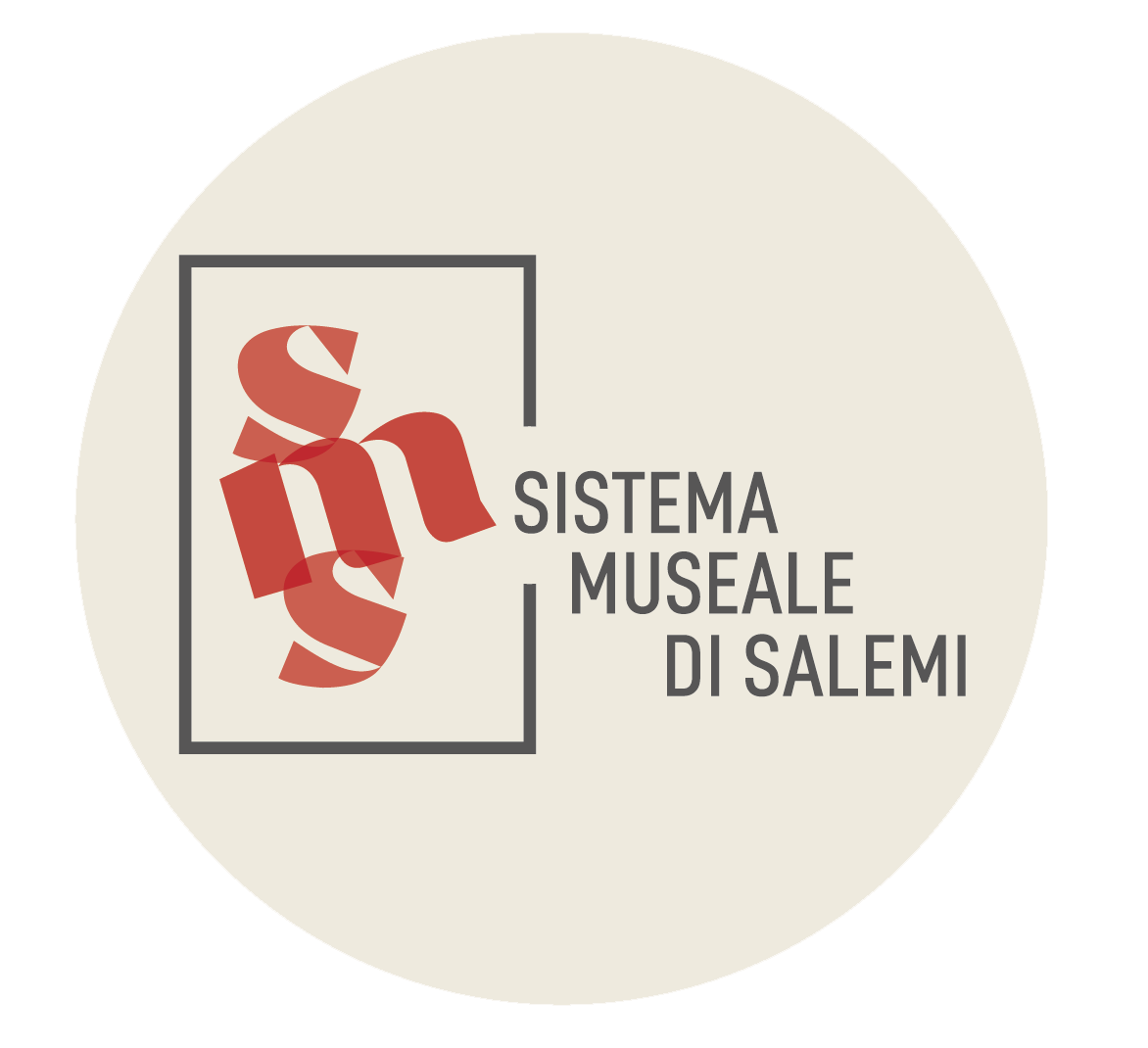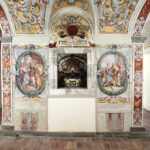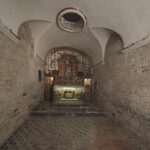Casa Santa of Loreto
CHRONOLOGY OF THE MAIN HISTORICAL AND CONSTRUCTIVE PHASES
The construction work began in 1700 and ended five years later with the inauguration of the sanctuary on 8th September 1705, the feast of the Nativity of Mary. After the earthquake of 1968, the Holy House was left in total abandonment and robbed of its furnishings. In 1996, after twenty years of work, it was restored.
HISTORICAL INFORMATION
A Jesuit native of Perugia, Father Silvio Ludovico Minimi (1633-1730), who lived for forty-five years in the College of Salemi, who was devoted to Our Lady of Loreto, thought to build a copy of the “Holy House” of Loreto in the enclosure of the college. The design of the work was entrusted to the architect Giovanni Biagio Amico (1648-1754) from Trapani and on 8th September 1705 the House was consecrated for worship by Mgr. Bartolomeo Castelli, bishop of Mazara del Vallo.
In 1715,in a glass urn under the altar were placed the sacred relics of Saint Victorian martyr, sent from Rome to the Jesuits. Until the end of the 19th century, the Holy House was a place of pilgrimage and a place of Marian devotion. On 28th December 1995, then it was reopened for worship by the Archpriest Pasquale Gandolfo and the Salemitan priest Marco Renda.
THE BUILDING
The building is in a good state of conservation.
The church has a rectangular plan with two doors and it was built following the European phenomenon of the construction of Holy Houses on the model of the Holy Sepulchre. Being the faithful copy of the Holy House of Loreto in the Marches, the one of Salemi is also incorporated in a religious building that allows the public to go around and admire the decorations of the external walls. The external walls are adorned with frescoes that reproduce, in all details, the marble bas-reliefs of the original. You can also admire an Adoration of the Magi, a Flight from Egypt, the Marriage of the Virgin, the Presentation of Jesus at the Temple and the Visit of Mary to Saint Elizabeth. The Nativity of Jesus, placed in the north-west wall was lost because of the precariousness of the plaster.
Above the window, we read this inscription: «Forma Domus in qua verbum caro factum est. Year 1705» (The house where the word was made flesh. Year 1705).
The interior of the house is divided into two sections: the actual house with the altar embellished with a tabernacle carved in alabaster and surrounded by reliquaries covered with crystals and gold wood; the section behind the altar contains the chapel with the statue of the Black Madonna. The floor, on the other hand, is made up of glazed hexagonal terracotta bricks.


